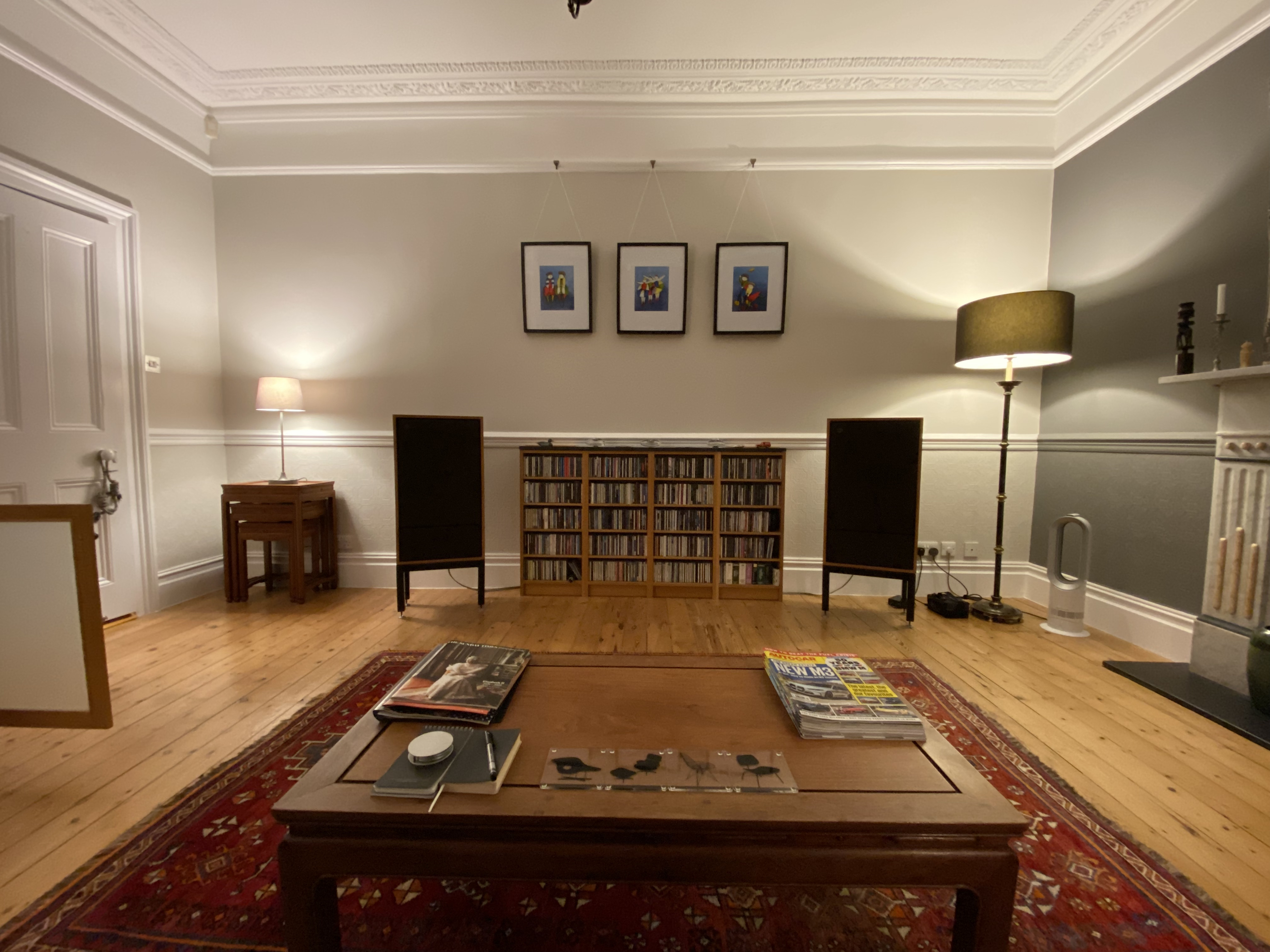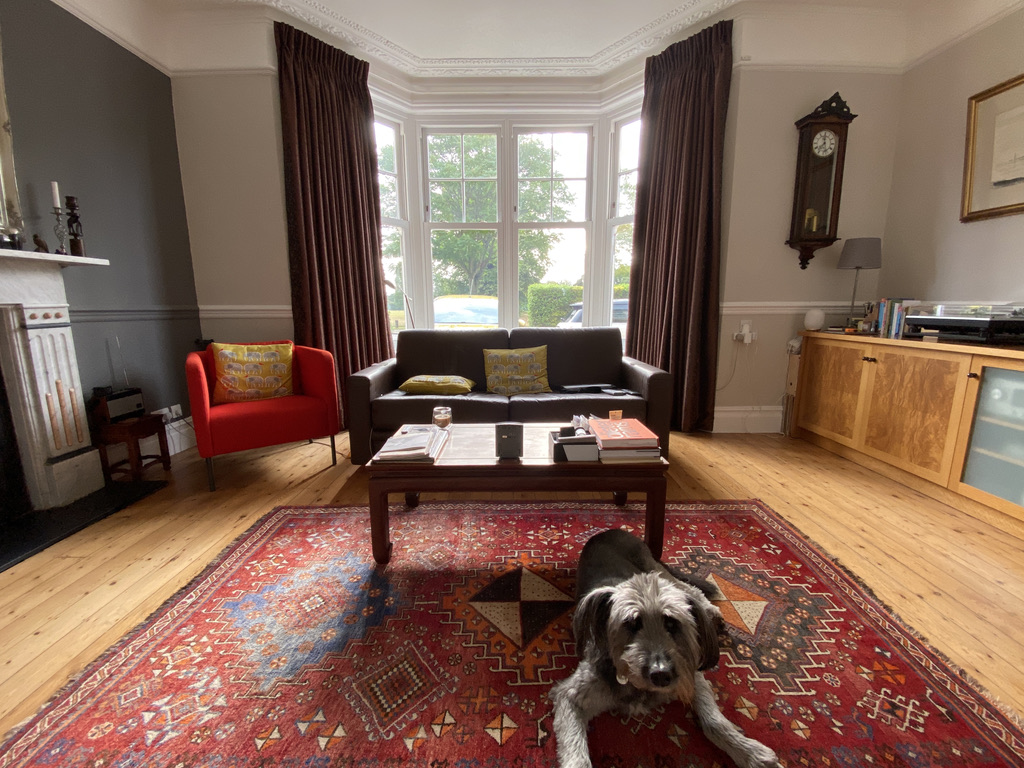You are using an out of date browser. It may not display this or other websites correctly.
You should upgrade or use an alternative browser.
You should upgrade or use an alternative browser.
HiFi in standard Victorian sitting rooms
- Thread starter gustav_errata
- Start date
Mike Reed
pfm Member
There are no side reflections to ESLs so side walls are irrelevant. Not sure why you say 'so far away from front wall'. The front wall doesn't come into it as it's the seating position, which, to be fair, shouldn't be so close as to use ESLs as headphones, in effect. Martin Logan hybrids with their 30 degree dispersion angle, do need you to be a fair way away. Quads simply need at least 3 feet behind.I don't understand how ESLs can go so close to the side walls yet need to be so far away from the front wall
You'd only need excessive toe-in if you're nearly sitting on top of them and that completely negates having them. My 2905s are virtually straight and throw out a soundstage which is good for the 7 feet of my sofa but I prefer the elongated isosceles triangle format of placement with prob. a ratio of 2 to 1 (distance to width).
ToTo Man
the band not the dog
I define the 'front wall' as the wall I look at when listening to music and the 'rear wall' as the wall that's behind me, though I concede that many use the opposite terminology. Front wall makes more sense to me as the speakers are placed in the 'front half' of the room and the listening seat in the 'rear half'.There are no side reflections to ESLs so side walls are irrelevant. Not sure why you say 'so far away from front wall'. The front wall doesn't come into it as it's the seating position, which, to be fair, shouldn't be so close as to use ESLs as headphones, in effect. Martin Logan hybrids with their 30 degree dispersion angle, do need you to be a fair way away. Quads simply need at least 3 feet behind.
You'd only need excessive toe-in if you're nearly sitting on top of them and that completely negates having them. My 2905s are virtually straight and throw out a soundstage which is good for the 7 feet of my sofa but I prefer the elongated isosceles triangle format of placement with prob. a ratio of 2 to 1 (distance to width).
My 4.2m x 3.8m room was probably too cosy for ESL63s as no matter how far away from the front wall I placed them I got major cancellations in the midbass. Sitting just 2 metres away from them I essentially needed to toe them in like headphones to hear all of their high-frequency extension which dropped very steeply off-axis. Their midband was, however, gloriously pure.
mandryka
pfm Member
It's amazing how seriously toe in changes the sound of quad esl 63s in my room for the worse! Mine are about 7' apart and I'm about 12' away, one of them very close to a side wall, the other much less so because of the bay. But I'm impressed by @KeithL 's picture and at some point I may rearrange the room like that - that would mean they'd be further apart.
I really wonder if people who say that the ESL 63 and its later incarnations are just not very good speakers haven't heard them set up in the room correctly - with too much toe in for example.
I really wonder if people who say that the ESL 63 and its later incarnations are just not very good speakers haven't heard them set up in the room correctly - with too much toe in for example.
gustav_errata
pfm Member
Beautiful room! And you made me realize I made a mistake: the covenant of our house dates to 1902 so in fact it must be Edwardian too. I plead foreigner ignorance and laziness. That invalidates the whole discussion. Sorry guys! We need to start over.1905 Edwardian sitting room.
Bay window behind.
Fireplace to the right.
Door to the left.
No sound treatment, though sounds best in the evening when the curtains are drawn.


KeithL
pfm Member
I think the Victorian style continues into the Edwardian period.Beautiful room! And you made me realize I made a mistake: the covenant of our house dates to 1902 so in fact it must be Edwardian too. I plead foreigner ignorance and laziness. That invalidates the whole discussion. Sorry guys! We need to start over.
gustav_errata
pfm Member
Fortunately I think the photos in this thread support this hypothesis. Just a bit of fun, that's all (actually it's interesting to know that the house is from the beginning of the Edwardian period after having Victorian in mind all this time).I think the Victorian style continues into the Edwardian period.
Edit: and apologies, it was not meant to be a snarky comment towards you at all! Lack of carpeting aside, your room appears to be the most similar to mine, so of course quite helpful. I shared the photos with my wife immediately.
Mike Reed
pfm Member
Yes, late Victorian, say 1860 on, until the outbreak of WW1 followed similar architectural styles with stained glass and ornamental ceiling roses and other touches.. Property looked good then and still does; well-built too, on the whole, though cavity walls hadn't appeared except in rare bespoke cases.I think the Victorian style continues into the Edwardian period.
Mike Reed
pfm Member
They don't look like ESLs in Keith's room; at least not like any ones I've come across and too close to rear (behind spkr) wallBut I'm impressed by @KeithL 's picture and at some point I may rearrange the room like that - that would mean they'd be further apart.
Yes, late Victorian, say 1860 on, until the outbreak of WW1 followed similar architectural styles with stained glass and ornamental ceiling roses and other touches.. Property looked good then and still does; well-built too, on the whole, though cavity walls hadn't appeared except in rare bespoke cases.
Depends on your definition of well built, if you mean they're still standing then yes I suppose so. But on the whole there isn't a square wall or floor in any of them. I'd still have one over any other period of property though.
Tony L
Administrator
They don't look like ESLs in Keith's room; at least not like any ones I've come across and too close to rear (behind spkr) wall
Look like some of the larger BBC boxes to me, the three-way Spendors or Harbeths, something like that, maybe even LS5/8s.
KeithL
pfm Member
1974 Tannoy Cheviots reconned by Lockwoods 15 years ago.Look like some of the larger BBC boxes to me, the three-way Spendors or Harbeths, something like that, maybe even LS5/8s.
adamdea
You are not a sound quality evaluation device
Hmmm. But the Bridget Riley makes up for it.Every listening room needs Marvin The Martian. Fact.
simonpyeman
pfm Member
It’s very handy for juggling: 4 clubs or 5 balls is possible, and we have managed a passing pattern between two of us with 7 balls: it was the reason we bought the house! That and stilt walking… oh, and tightrope practice.Out of pure curiosity why did the Victorians build their houses with high ceilings. I know they are cool in summer but they must have needed a lot of expensive coal to heat them up in winter and also it makes for very steep (dangerous?) stairs.
Does anyone know the reasons?
Acoustically, the living room works with the Tannoys against the wall either side of the bay window with fire place one side and door the other and bookcases every where, but as this house was built with a large opening between the front and back rooms, a heavy velvet curtain is needed to separate the two rooms for best results.
mandryka
pfm Member
They don't look like ESLs in Keith's room; at least not like any ones I've come across and too close to rear (behind spkr) wall
Indeed. And for that reason it won't work because the alcoves are a good way to give them space behind.

